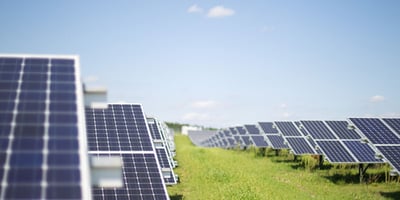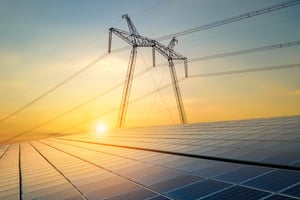According to the International Energy Agency (IEA), renewable capacity has significantly increased,...
The Impact of Coal Retirements on Grid Reliability in the United States
The reliability of the United States' power grid has emerged as a growing concern, with the North American Electric Reliability Corp. (NERC) sounding the alarm about blackout risks in various regions. A substantial contributor to this mounting risk is the planned retirement of 83 GW of fossil fuel and nuclear generation over the coming decade, with coal-fired power plants featuring prominently in this transition. This article delves into the profound implications of coal retirements on grid reliability in the United States.
The Decline of Coal-Fired Power
Historically, coal has been a dominant force in electricity generation across the United States. However, changing environmental priorities and the drive towards cleaner and more sustainable energy sources have significantly reduced the number of operational coal-fired power plants. According to the U.S. Energy Information Administration (EIA), coal's share of electricity generation in the United States plummeted from 50% in 2008 to 19% by 2020.
This decline results from a multifaceted interplay of factors, including the ascendancy of natural gas and renewable energy sources and stringent environmental regulations to curtail carbon emissions. While this decline aligns with crucial ecological objectives, it has engendered grid reliability concerns.
The Impact on Grid Reliability
Coal-fired power plants have long been prized for their reliability and capacity to deliver consistent and dispatchable electricity. As these coal plants are retired, the grid faces a substantial reduction in its dispatchable generation capacity, leading to an elevated risk of blackouts, particularly during periods of heightened demand. Per NERC's Long-Term Reliability Assessment, the closure of coal-fired power plants has resulted in a loss of approximately 40 GW in dispatchable generation capacity over the past decade.
Moreover, while transitioning to renewable energy sources is crucial for a sustainable future, these sources inherently exhibit variability. For instance, solar and wind power generation hinge on weather conditions and time of day. Such variability presents a formidable challenge in effectively aligning electricity supply with the ever-fluctuating demand. In 2020, renewable energy sources constituted 20% of the total electricity generation in the United States, with generation levels subject to unpredictable weather patterns, according to EIA data.
The retirement of coal plants also compounds resource adequacy concerns, especially in regions heavily reliant on coal-fired power. Grid operators must seek viable alternatives to ensure a stable power supply and fortify resilience against extreme weather and disruptive events. NERC's assessment highlighted that the Midcontinent Independent System Operator (MISO) anticipates a significant 4.7 GW shortfall beginning in 2028, primarily attributable to the expected retirement of coal plants.
Stakeholder Perspectives
An exhaustive grasp of the repercussions of coal retirements on grid reliability necessitates considering the diverse viewpoints of various stakeholders.
Coal Generators: Organizations advocating for coal generators, such as America's Power and the National Mining Association (NMA), voice valid concerns about grid reliability as coal plants phase out. They posit that the departure of coal-fired power plants leaves the grid bereft of fuel-secure, dispatchable generation. A striking statistic buttresses this claim: since 2010, coal retirements have permanently shuttered around 67 GW of coal-fired generation capacity, according to NMA data.
Cooperative Utilities: The National Rural Electric Cooperative Association (NRECA) underscores cooperative utilities' difficulties in preserving grid reliability. They point to rolling blackouts in certain states due to an imbalance between supply and demand. Disturbingly, nine states experienced rolling blackouts in the previous December due to surges in demand that outstripped available supply, according to NRECA reports.
Environmental Considerations: While environmental advocates staunchly support reducing coal-fired generation due to its substantial emissions benefits, they are equally adamant about the imperative for meticulous planning and investments in alternative energy sources to ensure grid reliability. EIA data paints a vivid picture of the surge in renewable energy capacity additions in the United States, with solar capacity witnessing a remarkable increase of 32 GW and wind capacity escalating by 24 GW from 2015 to 2020.
Policy Implications and Recommendations
Confronting the challenge of preserving grid reliability amid coal retirements mandates a judicious approach to energy policy and grid management. Here are some pivotal policy implications and recommendations:
Resource Diversification: Policymakers should fervently advocate for a diversified energy mix, incorporating natural gas, renewable sources, and energy storage solutions to offset the loss of coal-fired capacity.
Investment in Grid Modernization: Substantial investments in grid modernization, encompassing intelligent grids and advanced monitoring technologies, hold the potential to augment grid resilience and efficiency significantly. Encouragingly, the U.S. Department of Energy (DOE) committed over $5 billion to grid modernization projects between 2010 and 2019, with ongoing investments in grid research and development.
Environmental Considerations in Policy: Environmental regulations should meticulously weigh the electric grid's reliability and integrate provisions that shield against potential disruptions from generator deactivations.
Conclusion
The planned retirement of coal-fired power plants in the United States presents an intricate challenge to grid reliability. While environmental objectives and the pivot towards cleaner energy sources remain paramount, the loss of dispatchable generation capacity due to coal retirements raises concerns about the grid's resilience. The quest for a sustainable and reliable energy future hinges upon balanced and well-informed energy policies underpinned by investments in grid modernization and resource diversification. Striking the delicate equilibrium between environmental imperatives and grid stability is a linchpin for realizing such a future.


